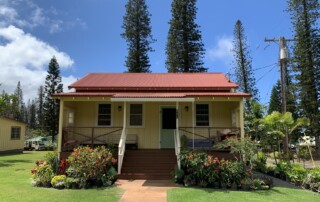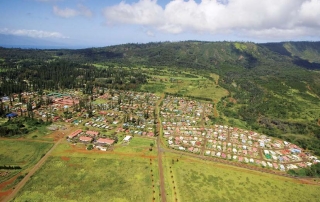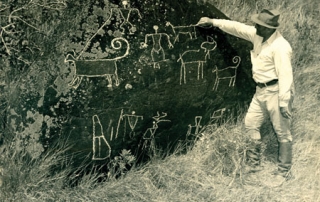Lāna‘i City Housing Program Preserves Historic Charm of Era
Preservation Honor Awards Recognizes Lāna‘i City Historic Housing Program for Perpetuating Town Design and Community 4/15/2020: Anyone fortunate enough to be guided through a tour of historic Lāna‘i City knows its charms. The “Pineapple Island” no longer produces pineapple, but the built environment still reflects the design and community memories of the early 20th-century agricultural era. Over the past five years, Pūlama Lāna‘i has engaged in a comprehensive program to preserve, maintain, rehabilitate, reconstruct and replace historic housing within Lāna‘i City. The program includes both treatments for existing buildings and the production of new infill housing. Lāna‘i City was a planned community that followed the urban design principles of the Garden City movement, as adapted and interpreted by the Hawaiian Pineapple Company’s (HAPCo) “Village” planning standards in the early 1920s. The town plan followed the concepts of a central greenspace (Dole Park) with tree-lined streets and avenues, generous yards and setbacks for gardens and vegetation, and designated areas of housing, businesses, civic areas, industry and agriculture. It is considered the first planned community in the Territory of Hawai‘i (1923). Aerial photograph of Lāna‘i City taken on October 23, 1929, looking northwest. Courtesy Lāna‘i Culture & Heritage Center. Designed by engineer David E. Root and substantially completed by 1924, Lāna‘i City is the last intact extant example of “Garden City” and “Village” planning standards remaining in Maui County, and one of only three in the state (the others are the Hickam and Wheeler Historic Districts on military installations on O‘ahu, constructed in the 1930s-1940s). According to the documentation submitted to nominate the Lāna‘i City historic district to the Hawai‘i Register of Historic Places, the town also contains the largest collection of intact plantation period buildings [...]





